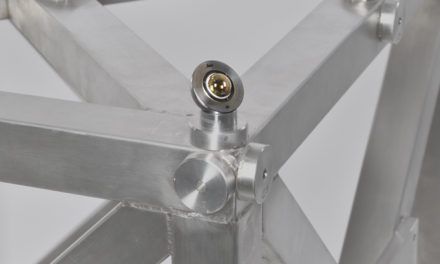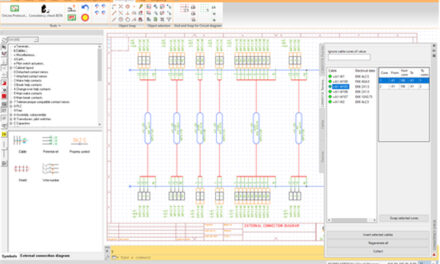
It’s common knowledge that Italian design is world-renowned. That Italian designers reinterpret virtually every object is no secret. Many of us are familiar with names like Alessi, Pininfarina or Colani. We think of cars with elegant lines, fine furniture and iconic household objects. Now, Zare from Boretto, Italy, has ventured to design a new toothbrush in collaboration with Nussbaumer Design, headed by Christoph Nussbaumer. The result is very unusual – this toothbrush is made from metal. Under the brand name MIO, this 3D-printed toothbrush featuring a timeless design is produced by means of additive manufacturing.
One of the technical strengths of 3D metal printing lies in its ability to redefine the function and geometry of products. So it’s hardly surprising that a 3D toothbrush made from metal has a different effect than a common toothbrush. And this holds true even though injection-molded toothbrushes made of plastic have been design objects or years now. When we buy a new toothbrush, today we can find ergonomic designs that combine customization and functionality, with colors and shapes that are intended to captivate us. Zare’s 3D metal toothbrush goes one step further.
The story behind it all: Zare’s expansion into 3D technology
Andrea Pasquali, co-owner of Zare: “During the financial crisis of 2008 to 2010, as a service provider in prototyping and small batch production we looked for new business fields and production options. This is how we came across additive manufacturing and all the opportunities it brings along with it. We quickly saw what strengths this production technology could provide our customers in the aerospace industry, medical and dental technology, motor sport and the packaging industry over conventional processes. The advantages were clear – AM saves time and money. Products were available faster, without tools or up-front costs. It offers never before seen possibilities for designing components with custom functions and geometries. We refused to accept the general assertion that AM is too expensive – especially since it all depends on identifying the right parts for additive manufacturing. In 2009, we purchased our first 3D plastic printer.” Increasing demand for metal products showed Zare just how important 3D metal printing was becoming. They completed their first metal projects with a service provider. However, they quickly encountered obstacles, particularly in surface quality. In 2013, Zare procured its first 3D metal printer – an M2 cusing from Concept Laser. “For us, this was a logical step in entering the 3D world with metals. It enabled us to handle requests and orders independently, quickly and, above all, constructively. Today, our ratio of plastic to metal products is 40 to 60,” explains Andrea Pasquali. Thanks to the company’s experience with conventional machining techniques and plastic prototyping, Zare quickly realized the advantages of 3D metal printing, introducing its customers to the new possibilities.
Zare breaks the mold
Though Zare was already successful in 3D metal printing, the company never really had the idea to create a designer toothpaste made from metal. This was still the case in 2015 as Andrea Pasquali approached designer Christoph Nussbaumer, known to him from other projects, to work together in laying the foundation for another profit driver. Inspired by their joint love for flexible geometries, something AM technology entails, the two came up with a wide variety of ideas. The objective was to take a normal object of daily use and create a luxury item not yet available that could only be created using additive manufacturing based on its design. In the end, they went with their gut, choosing a “customizable” toothbrush made from metal. The production costs didn’t play a decisive role, the focus instead placed on a unique design, exclusivity and user friendliness, in this case ergonomics. At Zare, a company originally from the prototyping sector, these dependencies were ground for a new approach. Why not produce 3D printed toothbrushes made from stainless steel or titanium? Both materials are standard in the dental industry and certified for oral use. Stainless steel 316L is common in dental technology. Titanium is biocompatible and particularly attractive for those with allergies to other materials. And both materials exude the sought value and exclusivity. The logical deduction: both materials are perfect for producing the envisioned design. Experience also promised that an M2 cusing Multilaser from Concept Laser would achieve an excellent surface quality. Particularly in the oral cavity, a very sensitive area, end products must have a perfect surface quality. This is why the toothbrushes are finished manually to ensure perfect results and maximum user comfort.






